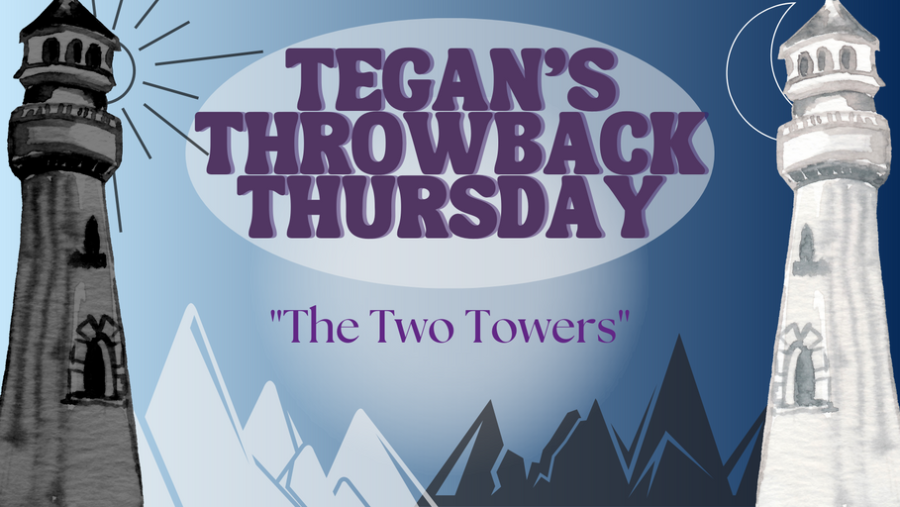“Lord of the Rings: The Two Towers” finds strength in its characters
“The Lord of the Rings: The Two Towers” is the second film in the LOTR trilogy. It introduces new characters and conflicts while expertly developing existing ones.
September 22, 2022
“The Fellowship of the Ring” was merely the beginning of the Lord of The Rings franchise. “The Two Towers” is the sequel in which our favorite characters begin to blossom into the heroic figures they were meant to be.
After the fellowship’s abrupt split at the end of “The Fellowship of the Ring,” “The Two Towers” expands in a different direction. The film not only allows for character development, but also more context of the world J.R. Tolkien created.
Once again, there will be spoilers in this review. Viewers beware.
“The Two Towers” begins roughly three days after “The Fellowship of the Ring.” After the fellowship was disbanded, Frodo Baggins (Elijah Wood) and Sam Gamgee (Sean Astin) begin their own quest to Mount Doom to destroy the ring. Aragon (Viggo Mortensen), Legolas (Orlando Bloom) and Gimli (John Rhys-Davies) are tasked with tracking down Merry (Dominic Monaghan) and Pippin (Billy Boyd) who are trying to escape the orcs that abducted them.
Three separate plot lines, how exciting!
Unfortunately for Frodo and Sam, they won’t be reunited with the group until “The Return of the King.” However, the two do receive the company of a new member and an old “friend,” Gollum (Andy Serkis).
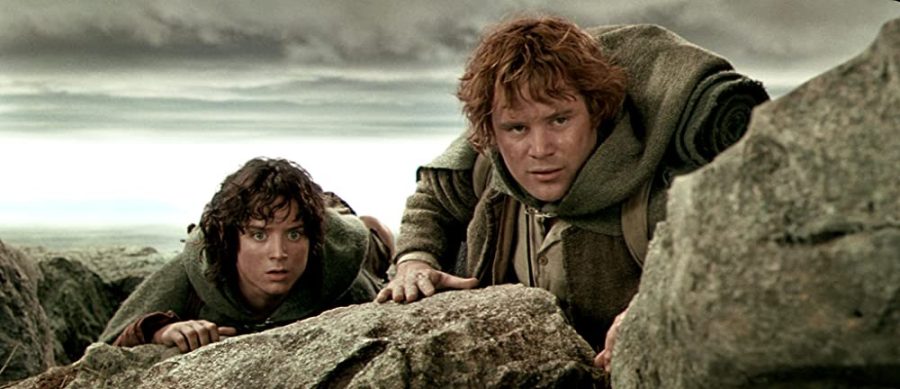
In “The Fellowship of the Ring,” it’s revealed that Gollum was captured by Sauron’s army and exposed the Baggin’s location in The Shire. He plays innocent for three days and continues to follow Frodo and Sam on their journey to Mordor. Ultimately, the two catch Gollum in the act. The three negotiate, and Gollum agrees to lead them to Mordor.
I was pleasantly surprised to see Gollum in the LOTR trilogy, let alone in a main role. I thought he would disappear after his brief appearance in “The Hobbit,” but Gollum acts as this weird, side-antagonist in the series. The saying, “Keep your friends close and your enemies closer,” is the best analogy for his character. Gollum battles between two personalities, Gollum,the personality affected by the ring, and Sméagol, who he was before he found the ring.
Frodo believes that Gollum can change fully back to Sméagol, and Gollum convinces you that he’s changed throughout the movie. Yet, there’s still a sense that something isn’t right. A hot and cold feeling. I enjoyed that Gollum keeps the viewers on their toes, always wondering what he’ll do next.
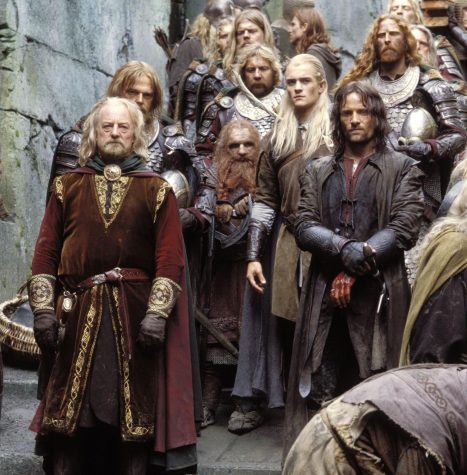
Meanwhile, Aargon, Legolas, and Gimli are hot on the trail of the orcs who kidnapped Merry and Pippin. They come across The Riders of Rohan, led by Éomer (Karl Urban). Éomer tells them The Riders of Rohan already killed all the orcs and found no sign of Merry and Pippin.
The three’s quest in “The Two Towers” quickly turns into a fight against good and evil when they partner with the kingdom of Rohan to defeat Saruman, the former White Wizard. The more orc fighting, the merrier, I’d say.
The battle between Rohan’s and Saruman’s army takes up the majority of their quest, but we get to see the three develop throughout it all. Aragon’s development throughout their quest is notable. As he helps lead Rohan to victory, he begins to understand why Middle Earth needs him as a king.
This group of three also reunites with Gandalf towards the beginning of the film.
After dying in the last film, Gandalf comes back in “The Two Towers” as Gandalf the White. Hooray! The film showed a lot more of Saruman as the antagonist in this film. Saruman’s turn from working against Sauron to working for him displays to the viewer the serious power the ring holds to all who fall victim to it, making for an extremely interesting villain arc.
For me, it displays that even the best of us can be tempted and lured into the dark side.
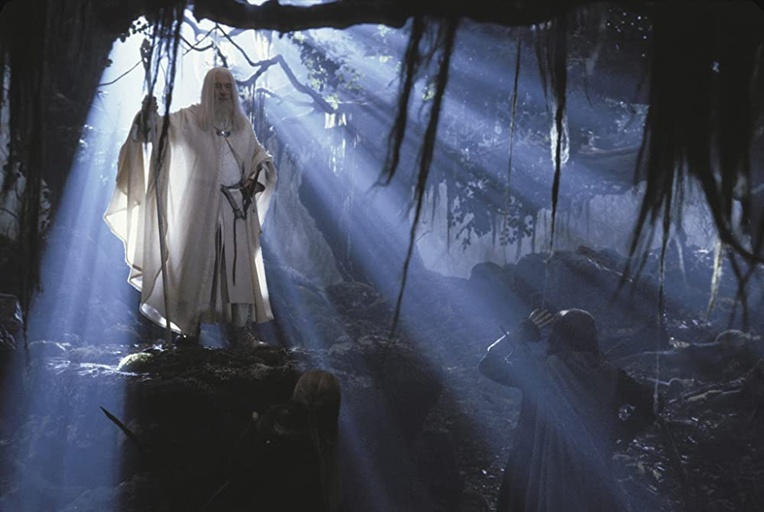
Merry and Pippin, in pursuit of escaping the orcs, hid in a nearby forest where they meet Treebeard (John Rhys-Davies), a giant, tree-like creature called an Ent who protects the forest. John Rhys-Davies also plays as Gimli in the trilogy. Treebeard agrees to help the hobbits navigate the forest and carry them on his back for the majority of the film.
While Merry and Pippin’s quest doesn’t seem important to the movie, it’s clear they’ve undergone great character development since the first movie. They became risk takers and noble knights. Their crude, childish actions melt away as they become the brave hobbits they originally set out to be. “The Two Towers” proves Merry and Pippin are more than just side characters, and everyone has an important role to play in the trilogy.
Of course, “The Two Towers” introduced more important characters to the series such as Éomer, Gollum, Théoden (Bernard Hill), Faramir (David Wenham) and Gríma Wormtongue (Brad Dourif). Most notably, the film introduced Éowyn (Miranda Otto), one of the few recurring female roles in the series.
Galadriel (Cate Blanchett) and Arwen (Liv Tyler) are important female roles as well, but Éowyn brings a new perspective to the film. Niece to Théoden, she desires to serve her kingdom fervently, but she is looked down upon because she is a woman. While she may not seem important in “The Two Towers,” “The Return of the King” says otherwise.
While I was not impressed with Éowyn in this film, she drastically develops in the third film. Hold onto your seats everyone.
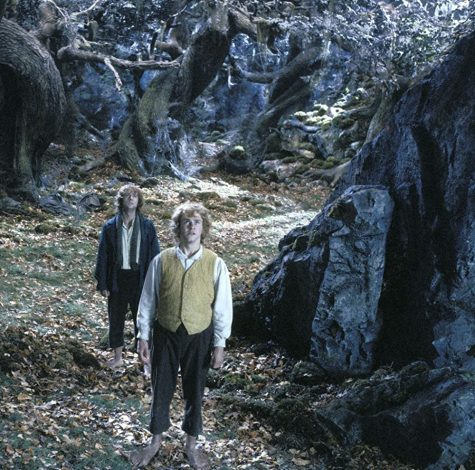
I can’t forget to mention the memes, of course. The most notable one to come out of “The Two Towers” is Legolas’ line “They’re taking the hobbits to Isengard,” which was remixed into a music video over an obscure track. It’s a classic example of a meme from the 2000’s. Also, I watched the original video while writing this review, and I can’t get the song out of my head.
Compared to the previous addition to the series, I liked “The Two Towers” a little more than “The Fellowship of the Ring.” The only problem I had with the film is there’s so much going on with the characters fighting against Saruman, I tended to forget about Frodo, Sam and Gollum when the movie cut back to their scenes. I know that’s just how the books were written, but it feels awkward at times.
Nevertheless, I’d give this addition an 8.5 out of 10.
If you enjoyed this review, tune in to the next Throwback Thursday review for my thoughts on the third and final installment of the series “The Return of the King.” Click here if you want to read my review of the first installment “The Fellowship of the Ring.”


